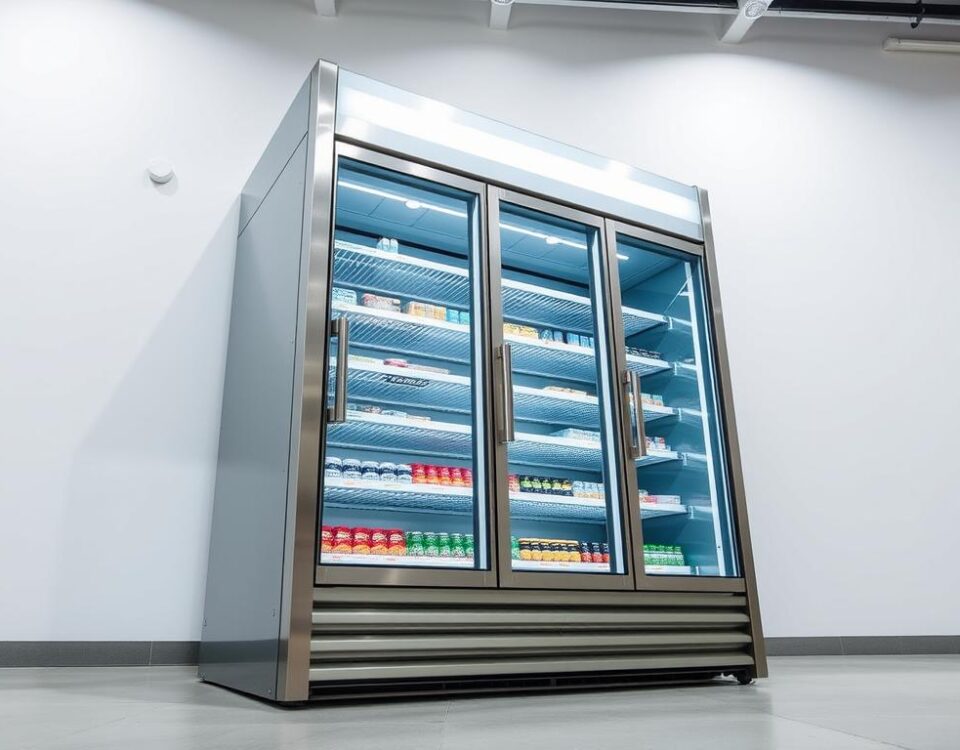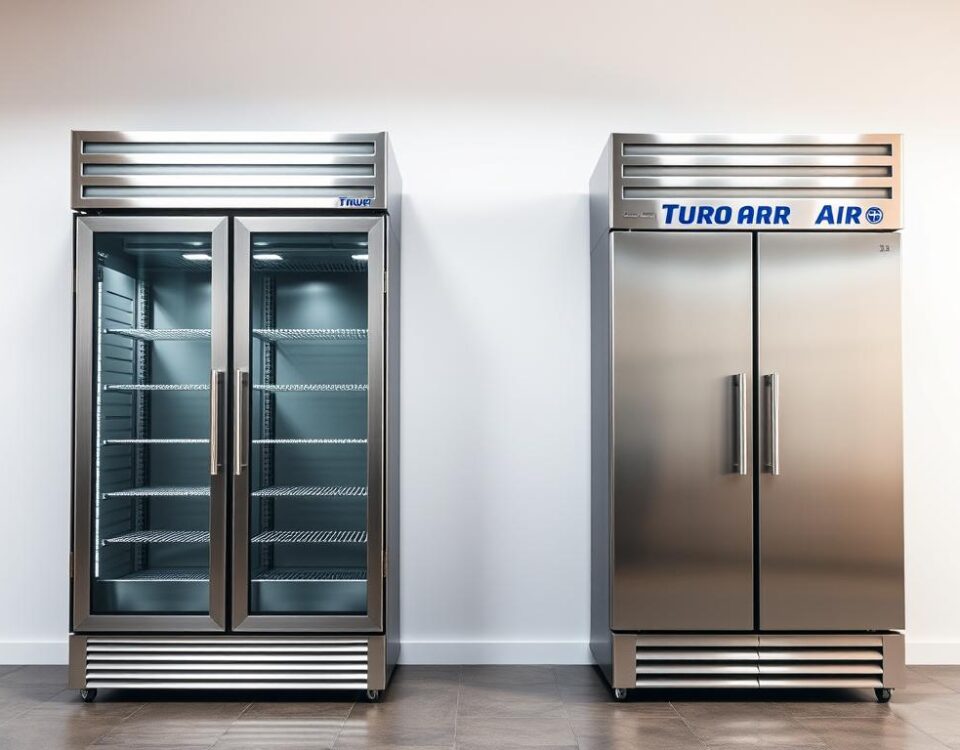
Ultimate Comparison Guide: Price, Service, and Reliability of Restaurant Suppliers
July 31, 2025
6 Hidden Secrets of Profitable Ghost Kitchen Operations
August 1, 2025As a restaurant owner, you’ve likely invested time and money into optimizing your website for search engines. But have you considered how SERP features can impact your online visibility?
I recall a local eatery that saw a significant drop in customers after a major update to Google’s search results. It turned out that their website was not optimized for the new Google SERP features, causing them to lose valuable organic search results real estate.
Did you know that a staggering 75% of users never scroll past the first page of search engine results? This statistic highlights the importance of understanding how to leverage SERP features to your advantage. So, what are these features, and how can they make or break your restaurant’s online presence?
Key Takeaways
- Understanding SERP features can significantly boost your restaurant’s online visibility.
- Optimizing for Google’s search features is crucial for staying ahead of the competition.
- Traditional SEO approaches may not be enough to capture the attention of potential customers.
- SERP features represent both new challenges and opportunities for restaurant owners.
- Leveraging the right SERP features can drive more traffic to your website.
Understanding SERP Features in the Restaurant Industry
In the competitive world of restaurant marketing, understanding SERP features can be the key to unlocking more customers and increasing revenue. As we dive into the world of search engine optimization (SEO) for restaurants, it’s essential to grasp how these special elements on Google’s search results page can impact your business.
What Are SERP Features?
SERP features are the special boxes and elements that Google adds to organic results to simplify search and make the SERP more informative. Some of these features contain links, while others are purely informational boxes designed to provide users with quick answers. For instance, when searching for a restaurant, you might see a Knowledge Panel with essential information like address, phone number, and reviews.
Why SERP Features Matter Specifically for Restaurants
Restaurants face unique challenges and opportunities with SERP features compared to other businesses. Food-related searches often trigger specific types of results, such as menus, reviews, and reservation options. Understanding these features is crucial because they directly influence how potential customers discover and interact with your restaurant online. For example, appearing in the Local Pack can significantly boost walk-in traffic.
| SERP Feature | Description | Benefit for Restaurants |
|---|---|---|
| Local Pack | Displays top 3 local businesses | Increases visibility and walk-in traffic |
| Knowledge Panel | Provides essential business info | Enhances credibility and provides quick info |
| Review Snippets | Shows star ratings and review counts | Builds trust and influences reservation decisions |
The Evolution of Restaurant Search in Google
Over the years, Google has transformed how restaurants appear in search results. From simple text listings, we’ve moved to rich visual experiences featuring menus, photos, reviews, and reservation options. The pandemic has accelerated certain SERP feature developments, such as the prominence of takeout and delivery information. Understanding this evolution is key to optimizing your restaurant’s online presence.
The Current SERP Landscape for Restaurants in 2024
Understanding the current SERP landscape is crucial for restaurants to stay competitive in 2024. The search engine results page (SERP) for restaurants has become increasingly complex, with various features competing for user attention.
Before we break down each SERP feature, let’s take a look at the latest data we’ve collected for the US market from the SE Ranking platform. The data shows that only 0.43% of Google’s first-page results are without SERP features, emphasizing the importance of optimizing for these features.
Most Common SERP Features for Restaurant Searches
The most common SERP features for restaurant searches include Local Packs, Knowledge Panels, and Featured Snippets. According to our data, Local Packs appear in over 70% of restaurant-related searches, making them a crucial element for restaurants to optimize for.
Knowledge Panels are another dominant feature, providing users with essential information about restaurants, such as hours of operation, address, and reviews. Featured Snippets, on the other hand, offer users quick answers to their queries, often highlighting specific dishes or restaurant policies.
How Google Determines Which Features to Display
Google’s complex algorithms determine which SERP features to display based on the type of search query. For restaurant searches, the algorithm considers factors such as location, user intent, and the type of information being sought.
For example, a search for “restaurants near me” is likely to trigger a Local Pack, while a search for “best Italian restaurants in New York” might result in a Featured Snippet or a Knowledge Panel.
“The way Google displays SERP features is constantly evolving, making it essential for restaurants to stay up-to-date with the latest trends and adjust their optimization strategies accordingly.”
Mobile vs. Desktop: Key Differences for Restaurant Searches
There are significant differences in how SERP features are displayed on mobile versus desktop devices. Mobile searches are more likely to trigger Local Packs and “near me” searches, reflecting the on-the-go nature of mobile users.
Desktop searches, on the other hand, may favor more detailed information, such as Knowledge Panels and Featured Snippets. Understanding these differences is crucial for restaurants to tailor their optimization strategies to different user behaviors.
Hidden Way #1: Local Pack Dominance Can Make or Break Your Walk-In Traffic
The Local Pack is a game-changer for restaurants, offering a prime opportunity to capture local diners. As a crucial SERP feature, it has the power to make or break a restaurant’s walk-in traffic. In this section, we’ll explore the anatomy of the Local Pack, its influence on diner decision-making, and a real-life case study that demonstrates the impact of Local Pack optimization.
Anatomy of the Local3-Pack for Restaurants
The Local Pack, now typically displaying three listings, is a prominent feature at the top of Google’s search results for location-based queries. It includes a map and three business listings, with information drawn from Google Business profiles. The elements that make up the Local Pack for restaurants include:
- Business name and logo
- Rating and review count
- Distance from the searcher’s location
- Address and phone number
- Link to Google Maps for directions
Each of these components plays a crucial role in influencing potential diners’ decisions. For instance, a restaurant with a high rating and a prominent logo is more likely to attract clicks.
How the Local Pack Influences Diner Decision-Making
The Local Pack significantly influences diner decision-making by providing essential information at a glance. When searching for a restaurant, users are drawn to the top listings, which are perceived as more trustworthy and relevant. The proximity of a restaurant to the searcher’s location, as indicated in the Local Pack, is a key factor in the decision-making process.
Key factors influencing diner decision-making:
| Factor | Impact |
|---|---|
| Proximity | Higher relevance for nearby restaurants |
| Rating and Reviews | Increased trust for highly-rated restaurants |
| Business Information | Easier access to essential details like address and phone number |
Case Study: How One Restaurant Doubled Foot Traffic Through Local Pack Optimization
A local Italian restaurant in New York City saw a significant increase in foot traffic after optimizing their Google Business Profile and Local Pack presence. By ensuring their profile was complete, up-to-date, and featured high-quality images, they improved their visibility in the Local Pack.
The strategies they implemented included:
- Adding a detailed description with a link to their official website
- Choosing the most relevant category for their business
- Uploading high-resolution profile and cover photos
- Verifying their address, phone number, and opening hours
As a result, the restaurant doubled its foot traffic within three months, demonstrating the power of Local Pack optimization for driving real-world customers to their door.
By understanding the anatomy of the Local Pack, its influence on diner decision-making, and implementing optimization strategies, restaurants can significantly improve their visibility and attract more walk-in customers.
Hidden Way #2: Knowledge Panels Shape Your Restaurant’s First Impression
Knowledge Panels have become a vital component in shaping how potential customers perceive your restaurant online. When users search for your restaurant’s name, the Knowledge Panel appears on the right side of the Google SERP, providing a snapshot of key information about your business.
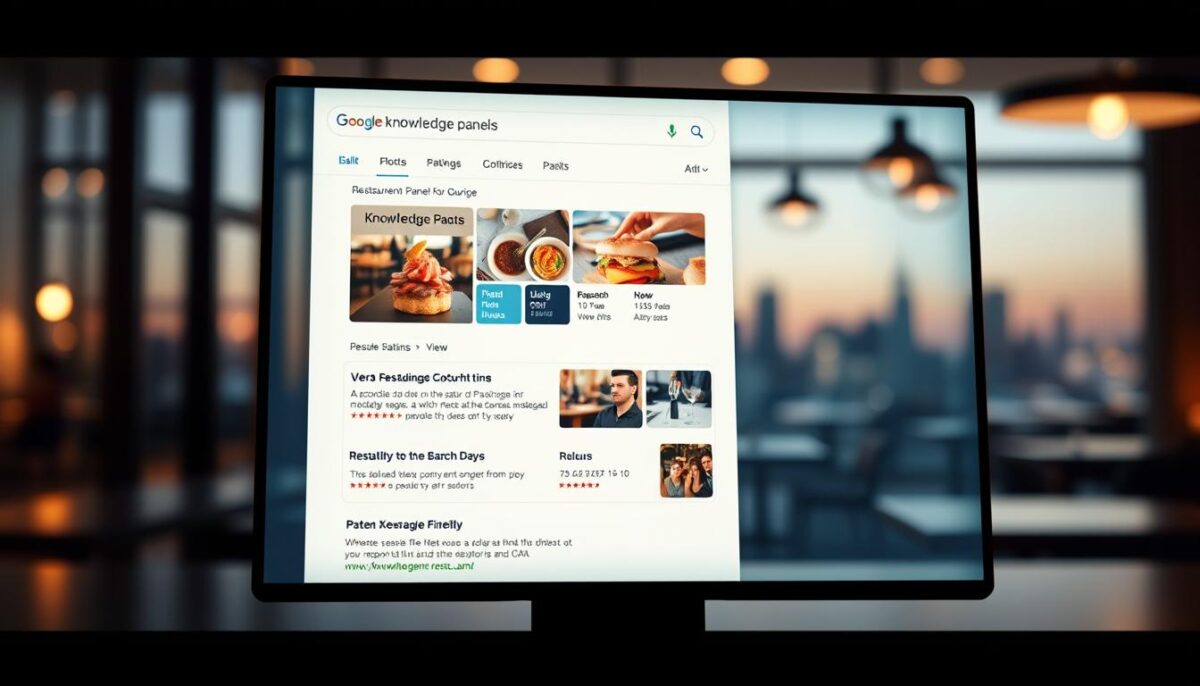
What Information Google Pulls Into Restaurant Knowledge Panels
Google pulls a variety of information into restaurant Knowledge Panels, including:
- Basic details such as hours of operation, address, and phone number
- Photos of your restaurant, dishes, and ambiance
- Customer reviews and ratings
- Popular dishes and menu items
- Q&A sections where customers can ask questions
- Social media links to your restaurant’s profiles
This comprehensive overview gives potential customers a broad understanding of your restaurant, influencing their decision-making process even before they visit your website.
How Knowledge Panels Impact Brand Perception
The information displayed in your restaurant’s Knowledge Panel significantly impacts how potential customers perceive your brand. A well-maintained Knowledge Panel with accurate and up-to-date information can enhance your restaurant’s credibility and attractiveness. Conversely, outdated or incorrect information can deter potential customers.
Key factors influenced by Knowledge Panels include:
- Credibility: Accurate and consistent information boosts trust
- Visibility: High-quality photos and positive reviews increase appeal
- Accessibility: Clear contact information and directions facilitate visits
Controlling Your Restaurant’s Knowledge Panel Information
To ensure your restaurant’s Knowledge Panel accurately represents your brand, follow these steps:
- Claim and verify your Google Business Profile to gain control over your Knowledge Panel information
- Regularly update your business hours, address, and contact details
- Encourage customers to leave reviews and respond to them promptly
- Upload high-quality photos of your restaurant and dishes
- Monitor the Q&A section and provide timely responses to customer inquiries
By taking control of your Knowledge Panel, you can ensure that potential customers receive accurate and appealing information about your restaurant, ultimately shaping a positive first impression.
Hidden Way #3: Featured Snippets Can Steal or Boost Your Recipe Traffic
Recipe Featured Snippets have the power to make or break a restaurant’s online visibility, and here’s how to harness that power. Featured Snippets are a crucial element in search engine results pages (SERPs), providing users with a quick answer to their query. For restaurants, this can be particularly significant when it comes to recipe-related searches.
How Recipe Featured Snippets Work
Featured Snippets are generated by Google’s algorithms, which analyze the content of web pages to determine the most relevant and concise answer to a user’s query. For recipe searches, this often involves extracting key information such as ingredients, cooking methods, or nutritional information. When a user searches for a specific recipe, Google may display a Featured Snippet that includes a fragment of the most relevant page’s content, along with a link to the page and its URL.
The format of Featured Snippets can vary, appearing as a definition box, an ordered or unordered list, or even a table. The key is to understand how to structure your recipe content in a way that Google can easily parse and present it as a Featured Snippet.
The Double-Edged Sword: When Featured Snippets Help vs. Hurt
While Featured Snippets can significantly boost a restaurant’s online visibility by placing their content at the top of search results, they can also potentially hurt traffic by providing users with the information they need directly in the search results. This can reduce the need for users to visit the restaurant’s website, potentially impacting traffic and engagement.
However, when optimized correctly, Featured Snippets can drive high-quality traffic to a restaurant’s website. The key is to ensure that your content is not only featured in the snippet but also provides additional value that encourages users to click through to your site.
Optimizing Restaurant Content for Featured Snippet Capture
To increase the chances of capturing Featured Snippets for recipe-related searches, restaurants should focus on creating high-quality, structured content. This involves using clear headings, concise lists, and relevant schema markup to help Google understand the content.
| Optimization Technique | Description | Benefit |
|---|---|---|
| Use Clear Headings | Organize content with descriptive headings | Improves readability and helps Google understand content structure |
| Utilize Concise Lists | Present information in easy-to-read lists | Enhances user experience and increases chances of being featured |
| Implement Schema Markup | Add structured data to recipe content | Helps Google understand the context and relevance of your content |
By implementing these strategies, restaurants can improve their chances of capturing Featured Snippets and driving more traffic to their websites.
Hidden Way #4: Google’s Image Pack Influences First-Time Diners
Food imagery plays a critical role in enticing new customers to a restaurant, and Google’s Image Pack is at the forefront of this visual discovery process. When users search for specific dishes or cuisines, the images that appear in the Image Pack can significantly influence their dining decisions.
The Psychology Behind Food Image Searches
The human brain is wired to respond to visual stimuli, and food images are no exception. Research has shown that appetizing food images can trigger cravings and increase the likelihood of a user visiting a restaurant. Google’s Image Pack taps into this psychological response by showcasing relevant and appealing images at the top of search results.
The impact of food imagery on dining decisions cannot be overstated. A well-presented dish can make a restaurant more appealing, while a poorly lit or unappetizing image can deter potential customers. As such, it’s crucial for restaurants to optimize their online images to maximize their chances of appearing in the Image Pack.
How Image Packs Drive Restaurant Discovery
Image Packs often appear for food and dish-specific searches, creating an opportunity for restaurants to capture attention before competitors. For instance, a search for “best pizza in [location]” or a specific dish query can trigger an Image Pack display. Restaurants that have optimized their images are more likely to appear in these results, driving discovery and potentially increasing foot traffic.
To leverage Image Packs effectively, restaurants should focus on image optimization strategies. This includes using descriptive file names, alt tags, and optimal image sizes. Additionally, creating a consistent visual brand across the restaurant’s website and Google Business Profile can enhance their visibility in Image Packs.
Image Optimization Strategies for Restaurants
To get your restaurant’s images featured in Google’s Image Pack, focus on the following strategies:
- Use descriptive file names that include target keywords.
- Optimize alt tags with relevant descriptions.
- Ensure images are of optimal size and quality.
- Create a consistent visual brand across your website and Google Business Profile.
By implementing these strategies, restaurants can improve their chances of appearing in the Image Pack, driving discovery and potentially increasing traffic and conversions.
Hidden Way #5: People Also Ask Boxes Reveal Crucial Customer Concerns
People Also Ask boxes are more than just a SERP feature; they’re a goldmine of customer insights for restaurants. These dynamic boxes provide a list of questions related to the original query, offering a window into what potential diners are curious about. By understanding and leveraging this information, you can significantly enhance your restaurant’s online presence and appeal to more customers.
Common Restaurant Questions in PAA Boxes
When searching for restaurants, People Also Ask boxes often surface questions related to menu items, pricing, and operating hours. Common queries include “What are the best restaurants near me?” or “How much does dining at cost?” Analyzing these questions can help you identify the information potential customers are seeking, allowing you to tailor your online presence accordingly.
For instance, if PAA boxes frequently ask about your restaurant’s vegetarian options, it may be beneficial to highlight these dishes on your website and social media channels. This not only addresses customer concerns but also showcases your restaurant’s offerings in a relevant and timely manner.
Using PAA Data to Improve Your Restaurant’s Online Presence
By examining the questions that appear in People Also Ask boxes related to your restaurant or cuisine, you can gain valuable insights into customer concerns and preferences. This data can be used to improve your website content, menu descriptions, and overall online presence. For example, if PAA boxes often ask about your restaurant’s takeout options, you can optimize your website to clearly display this information and make it easily accessible to potential customers.
Moreover, PAA data can guide your content creation strategy. If certain questions are frequently asked, you can develop blog posts, FAQs, or other content that directly addresses these queries, thereby improving your restaurant’s visibility in search results and providing value to potential diners.
Strategies to Appear in Restaurant-Related PAA Boxes
To increase your restaurant’s chances of appearing in People Also Ask boxes, focus on creating high-quality, informative content that directly answers common customer questions. Utilize a question-and-answer format on your website, where you pose a question and provide a clear, concise answer. This not only helps with SEO but also makes it more likely that your content will be featured in PAA boxes.
Additionally, ensure that your website is mobile-friendly and loads quickly, as these factors can influence your visibility in search results, including PAA boxes. By optimizing your online presence and content strategy based on PAA insights, you can improve your restaurant’s discoverability and attract more customers.
Hidden Way #6: Review Snippets Directly Impact Reservation Decisions
Review snippets are a crucial SERP feature that can significantly impact your restaurant’s reservation rates. When potential customers search for restaurants like yours, the information they see in the search results can greatly influence their decision-making process.
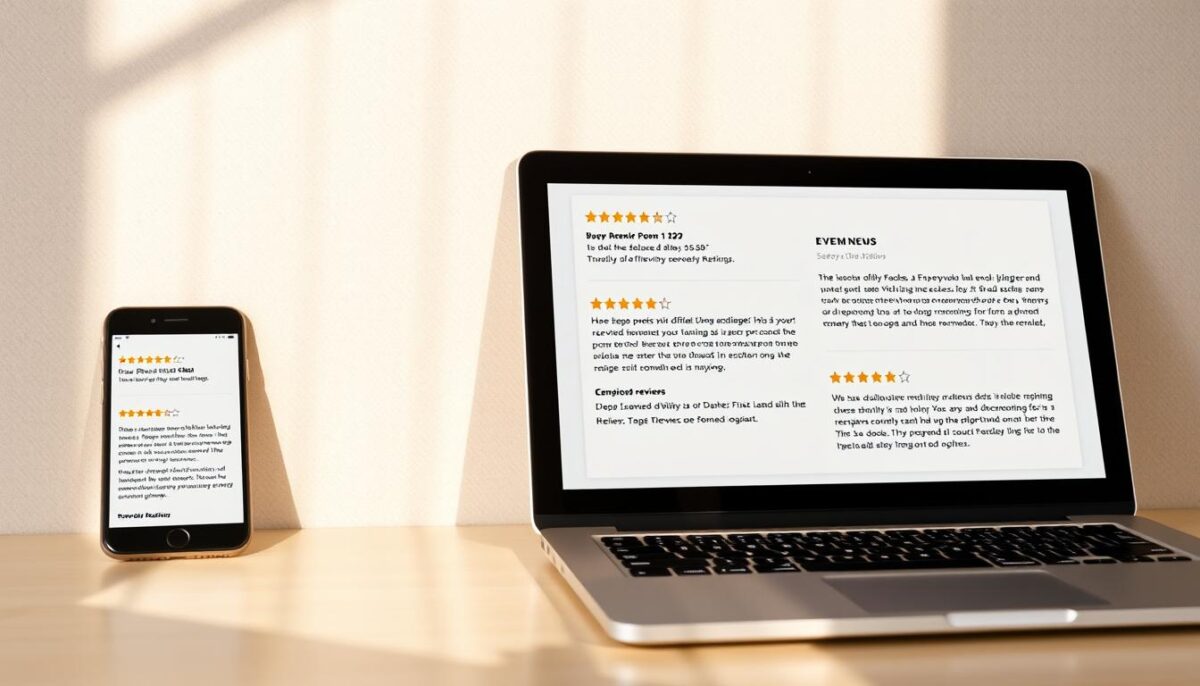
How Google Selects Review Snippets for Restaurants
Google’s algorithm selects review snippets based on various factors, including the quality and quantity of reviews across multiple platforms. To increase the chances of getting featured in review snippets, it’s essential to maintain a strong online reputation across platforms like Google, Yelp, and TripAdvisor.
Google considers the overall rating, the number of reviews, and the diversity of review sources when selecting review snippets. By focusing on improving your review profile, you can enhance your restaurant’s visibility in search results.
The Correlation Between Review Snippets and Reservation Rates
Research has shown a direct correlation between positive review snippets and increased reservation rates for restaurants. When potential customers see a high rating and positive reviews, they are more likely to choose your restaurant over competitors.
By optimizing your review profile and increasing the chances of getting featured in review snippets, you can attract more customers and boost your reservation rates.
Managing Your Restaurant’s Review Profile for Better SERP Visibility
To manage your restaurant’s review profile effectively, you need to monitor reviews across multiple platforms and respond promptly to both positive and negative feedback.
By implementing review schema markup on your restaurant website, you can increase the chances of review snippets appearing in search results. Make sure to follow Google’s guidelines for review schema markup to avoid any penalties.
By combining these strategies, you can improve your restaurant’s online visibility, attract more customers, and ultimately drive more reservations.
The Impact of SERP Features on Restaurant Traffic
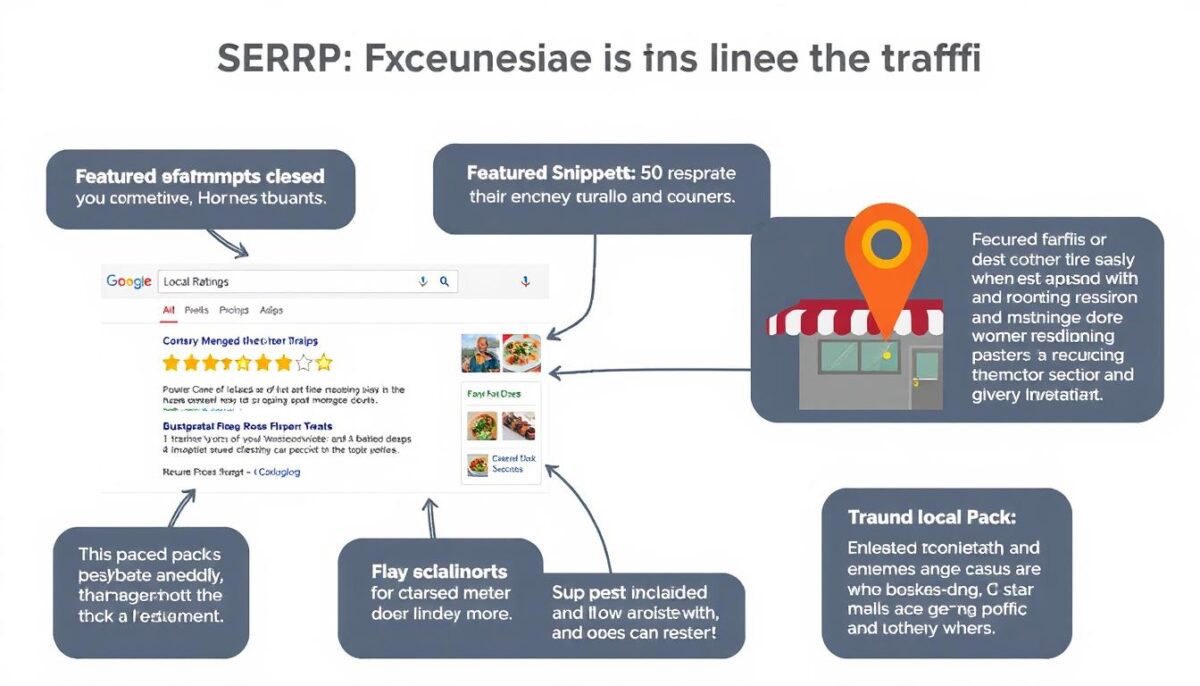
The impact of SERP features on restaurant traffic is multifaceted, affecting both online engagement and physical visits. As restaurants compete for visibility in search engine results, understanding the role of SERP features becomes crucial.
Traffic Patterns: Before and After SERP Feature Optimization
Analyzing real traffic patterns from restaurants before and after implementing strategic SERP feature optimization reveals significant changes. Restaurants that optimize for SERP features often see a quantifiable impact on both their online and offline visits.
For instance, a restaurant that appears in the local pack is more likely to attract walk-in customers. Similarly, restaurants featured in knowledge panels benefit from enhanced brand visibility, which can lead to increased customer loyalty.
Measuring the ROI of SERP Feature Visibility
To measure the return on investment (ROI) of SERP feature optimization, restaurants need to track specific metrics. These include website traffic, foot traffic, and reservation rates. By attributing these metrics to specific SERP features, restaurants can refine their optimization strategies.
For example, if a restaurant notices a significant increase in reservations after appearing in a featured snippet, it can infer that optimizing for featured snippets is beneficial. Similarly, a strong presence in image packs can drive discovery and attract new customers.
Understanding the compounding effect of appearing in multiple SERP features simultaneously is also crucial. This creates a halo effect for the restaurant’s brand, enhancing overall visibility and credibility.
The typical timeline for seeing results from SERP feature optimization varies, but most restaurants start to notice improvements within a few months. Setting realistic expectations and continuously monitoring performance are key to successful SERP feature optimization.
Google Business Profile: The Foundation of Restaurant SERP Success

A properly optimized Google Business Profile is the foundation upon which restaurant SERP success is built. As we’ve explored in previous sections, various SERP features can significantly impact your restaurant’s online visibility. However, without a solid Google Business Profile, you’re likely missing out on crucial opportunities to attract diners.
Your Google Business Profile serves as the central hub for your restaurant’s online presence, influencing multiple SERP features such as the Local Pack, Knowledge Graph, and review snippets. By optimizing your GBP, you can improve your chances of appearing in these coveted search results.
Essential GBP Optimizations Every Restaurant Should Make
To maximize your restaurant’s visibility in search results, there are several essential GBP optimizations you should implement:
- Verify your listing to ensure accuracy and authenticity
- Choose the most relevant category for your restaurant
- Provide accurate and up-to-date information, including your business name, phone number, and address
- Add a comprehensive description of your restaurant and its offerings
- Upload high-quality photos of your menu items, ambiance, and staff
By completing these essential optimizations, you’ll be well on your way to improving your restaurant’s search visibility and attracting more customers.
Advanced GBP Strategies for Competitive Markets
For restaurants in highly competitive markets, simply completing the basics isn’t enough. To truly stand out, you’ll need to leverage advanced GBP strategies:
- Utilize GBP posts to share updates, promotions, and events
- Engage with customers through the Q&A feature
- Highlight your restaurant’s unique attributes, such as outdoor seating or vegan options
- Monitor and respond to customer reviews
- Use GBP insights to inform your broader marketing strategy
By implementing these advanced strategies, you can gain a competitive edge in your local market and drive more customers to your restaurant.
Structured Data: The Secret Weapon for Restaurant SERP Domination
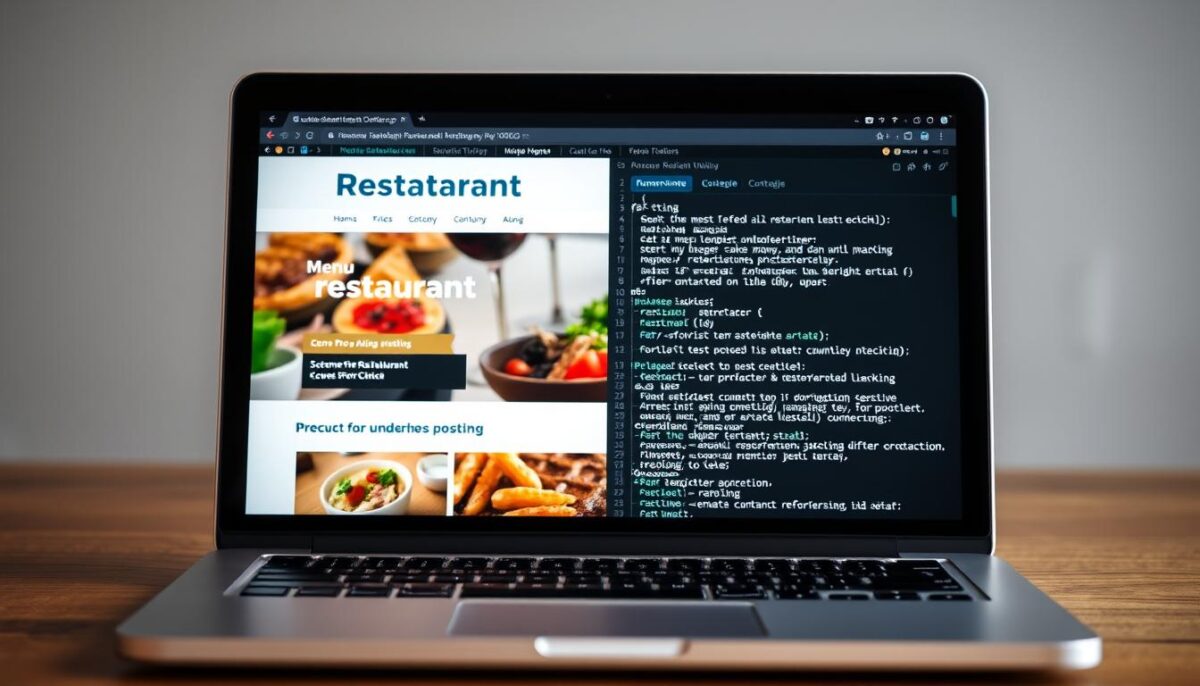
By implementing structured data, restaurants can significantly improve their visibility in search results. This often-overlooked SEO strategy can be the key to dominating the competition in the restaurant industry.
Schema markup is a type of microdata that helps search engines understand the content of a webpage. For restaurants, this can include information about menus, operating hours, and reviews.
Essential Schema Markup Types for Restaurants
There are several types of schema markup that are particularly useful for restaurants. These include:
- Restaurant schema: Provides general information about the restaurant, such as name, location, and contact details.
- Menu schema: Details the menu offerings, including prices and descriptions.
- FoodEstablishment schema: Offers additional information about the restaurant, such as operating hours and cuisine type.
- Recipe schema: Useful for restaurants that share recipes on their website, providing details about ingredients, cooking time, and nutritional information.
Implementing Schema Markup on Your Restaurant Website
Implementing schema markup on your restaurant website may seem daunting, but it’s a straightforward process. First, identify the types of schema that are most relevant to your business. Then, use a schema markup generator or work with a developer to add the necessary code to your website.
It’s essential to test your schema implementation using Google’s Rich Results Test tool to ensure it’s working correctly.
Common Schema Implementation Mistakes to Avoid
When implementing schema markup, there are several common mistakes to avoid. These include:
- Incorrectly formatting the schema markup code.
- Failing to update schema markup after changes to the website or business information.
- Not testing the schema implementation thoroughly.
By avoiding these mistakes and implementing structured data effectively, restaurants can improve their visibility in search results and attract more customers.
Properly implemented schema markup can trigger multiple SERP features simultaneously, creating compound visibility benefits. This can include rich snippets and rich results, making your restaurant more appealing to potential customers.
AI Overviews: The Newest SERP Feature Affecting Restaurant Discovery
Google’s AI Overviews are revolutionizing the way restaurants are discovered online. As the latest addition to Google’s search engine results pages (SERPs), AI Overviews are significantly impacting how users interact with restaurant information. In this section, we’ll explore how AI Overviews work, their impact on restaurant discovery, and strategies to ensure your restaurant’s content is AI Overview-friendly.
How Google’s AI Overviews Work for Restaurant Queries
AI Overviews are AI-generated answers that appear at the top of SERPs, providing users with quick and comprehensive information. For restaurant-related queries, AI Overviews can display details such as menu items, operating hours, and reviews. According to our research, the Food and Beverage niche triggers AI Overviews in 37.14% of searches, making it a crucial feature for restaurants to understand and optimize for.
The AI Overview is presented in a two-part format: on the left, it displays a text summary, while on the right, it provides a list of sources used to generate the answer. This format allows users to quickly grasp the information and jump to the sources for more details.
- AI Overviews provide quick answers directly on the SERP.
- They are particularly relevant for restaurant queries, including menu information and reviews.
- The feature is triggered in 37.14% of Food and Beverage-related searches.
Strategies to Ensure Your Restaurant Content is AI Overview-Friendly
To increase the chances of your restaurant’s content being cited in AI Overviews, focus on creating high-quality, informative content. Here are some strategies:
- Optimize your Google Business Profile: Ensure your GBP is complete, up-to-date, and accurately represents your restaurant.
- Use schema markup: Implement schema markup on your website to help search engines understand your restaurant’s details.
- Create detailed menu pages: Include comprehensive menu information, including descriptions and pricing.
- Encourage reviews: Positive reviews can improve your visibility in AI Overviews.
By adapting your content strategy to be AI Overview-friendly, you can improve your restaurant’s visibility and drive more traffic to your website.
Mobile SERP Features: Critical for On-the-Go Diners
With the majority of diners using their mobile devices to search for restaurants, understanding mobile SERP features is no longer optional. The way people search for dining options on their smartphones has become increasingly important, and restaurants need to adapt to these changes to remain visible and competitive.
Mobile SERP features differ significantly from their desktop counterparts, with a greater emphasis on local intent and immediate action. As I explore the world of mobile SERP features, it becomes clear that these elements are crucial for restaurants looking to capture the attention of on-the-go diners.
Mobile-Specific SERP Features for Restaurants
When it comes to mobile SERP features, restaurants need to be aware of the unique elements that appear on smaller screens. Some of the most important mobile-specific SERP features for restaurants include:
- The Local Pack, which displays the top three nearby restaurants
- Google Maps integration, allowing users to get directions quickly
- “Call now” and “Directions” buttons, enabling immediate action
- Review snippets, showcasing customer feedback
- Popular Times graphs, indicating when a restaurant is busiest
These features are designed to provide users with quick and relevant information, making it easier for them to decide where to dine. By understanding and optimizing for these mobile-specific SERP features, restaurants can improve their visibility and attract more customers.
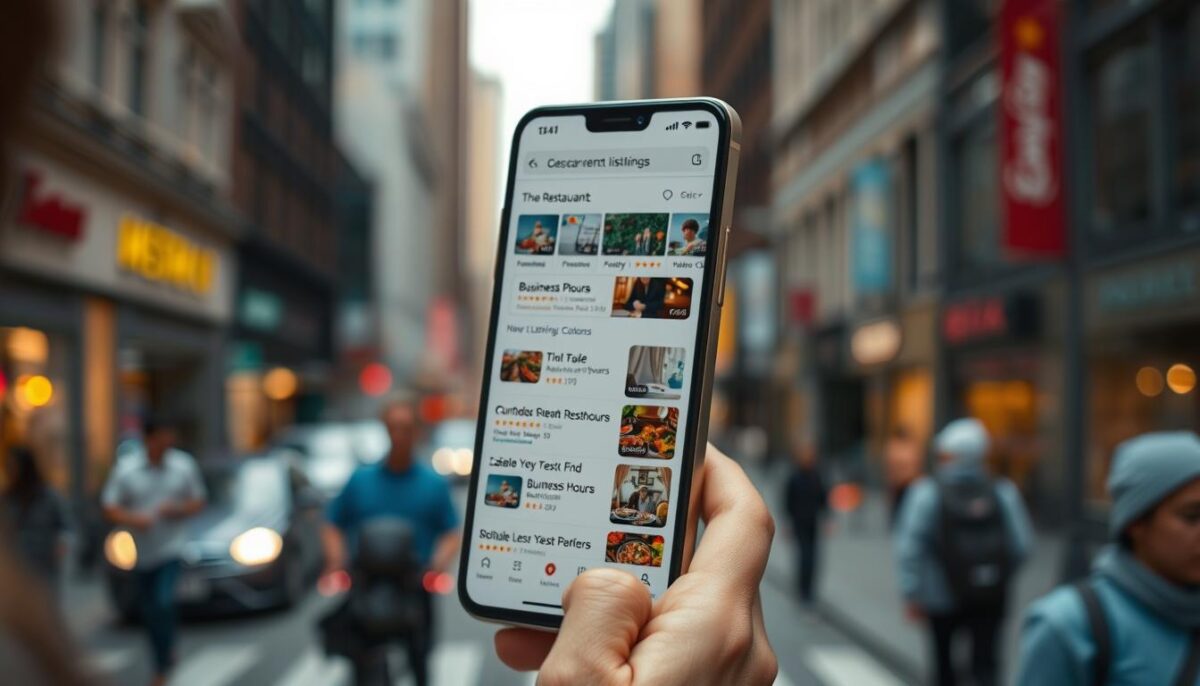
Optimizing for “Near Me” Searches and Local Intent
“Near me” searches have become increasingly popular, and restaurants need to optimize their online presence to capture this local intent. To do this effectively, restaurants should focus on the following strategies:
| Optimization Strategy | Description | Impact |
|---|---|---|
| Claim and optimize Google My Business listing | Ensure accurate and up-to-date information | Improved local search visibility |
| Use location-specific keywords | Incorporate “near me” and local terms in website content | Enhanced relevance for local searches |
| Encourage customer reviews | Positive reviews improve Local Pack ranking | Increased visibility and credibility |
By implementing these strategies, restaurants can improve their chances of appearing in “near me” search results and attract more local customers.
In conclusion, mobile SERP features are critical for restaurants looking to capture the attention of on-the-go diners. By understanding and optimizing for mobile-specific SERP features, restaurants can improve their visibility, drive more foot traffic, and ultimately increase their revenue.
Tracking and Measuring Your Restaurant’s SERP Feature Performance
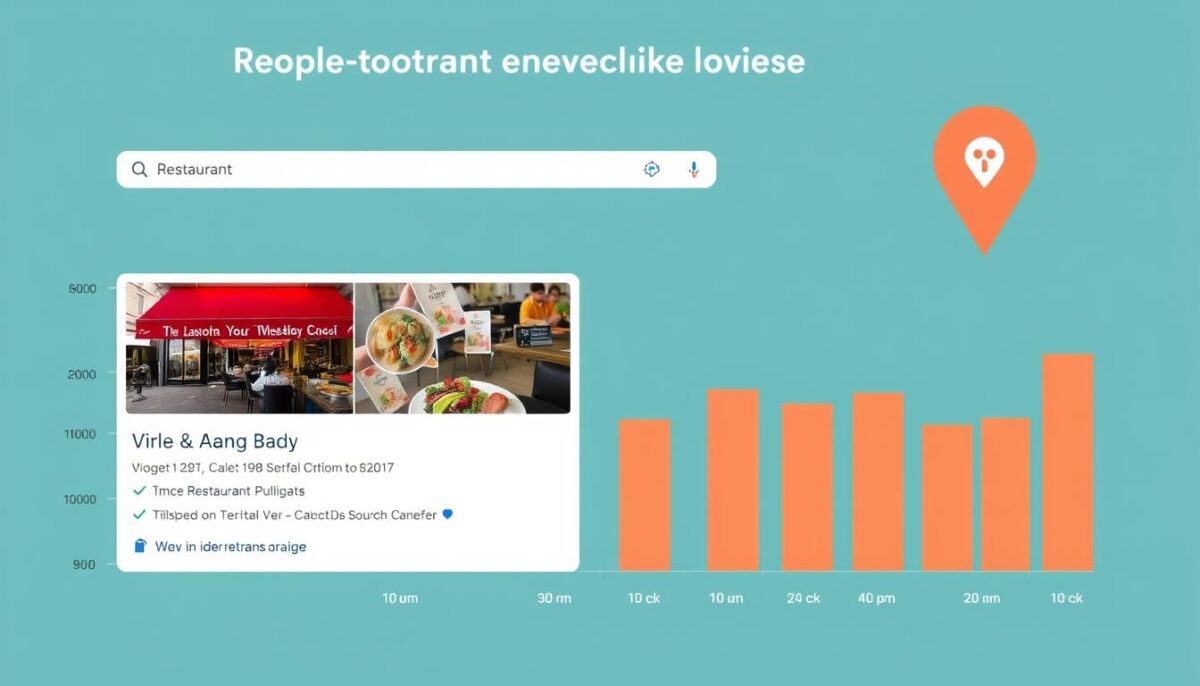
For restaurants, tracking SERP feature performance is not just about monitoring rankings; it’s about optimizing your entire online presence. To achieve this, you need to understand which SERP features are currently working for or against your restaurant.
Essential Metrics to Monitor
To gauge your restaurant’s SERP feature performance effectively, you need to monitor several key metrics. These include:
- Visibility: How often does your restaurant appear in SERP features?
- Click-through rates (CTR): How many users click on your restaurant’s listing after seeing it in a SERP feature?
- Conversion impact: How do SERP features influence your restaurant’s reservations, orders, or other key conversion metrics?
Tools for SERP Feature Tracking
Several tools can help you track your restaurant’s SERP feature performance. While Google Search Console is a free and powerful starting point, other paid solutions offer more detailed analysis and insights.
Some of the top tools for SERP feature tracking include:
- Google Search Console: Offers insights into your restaurant’s search appearance and SERP feature visibility.
- Ahrefs: Provides comprehensive SERP analysis and tracking capabilities.
- SEMrush: Offers detailed SERP feature tracking and competitor analysis.
By leveraging these tools and metrics, you can gain a deeper understanding of your restaurant’s SERP feature performance and make informed decisions to optimize your online presence.
Competitive Analysis: Learning From Other Restaurants’ SERP Successes
Learning from other restaurants’ SERP successes can help you refine your own strategy and stay competitive. In the ever-evolving landscape of search engine results, understanding how your competitors are leveraging SERP features is crucial for maintaining a strong online presence.
To begin, let’s examine how to identify your true SERP competitors, which may differ from your traditional business competitors. This involves analyzing the search results for relevant keywords and identifying the restaurants that are consistently appearing in the top SERP positions.
Identifying Competitors’ SERP Feature Wins
To identify competitors’ SERP feature wins, start by using tools like Google Search Console and Rank Tracker. These tools help you understand the search results landscape and identify the SERP features that are most prevalent for your target keywords. For instance, you can use the Search Appearance tab in Google Search Console to see the most popular rich SERP features present for your ranking pages.
By analyzing these features, you can gain insights into what types of content and strategies are working for your competitors. This information can be used to inform your own keyword research and content optimization efforts.
Reverse-Engineering Successful Restaurant SERP Strategies
Once you’ve identified your competitors’ SERP feature wins, the next step is to reverse-engineer their successful strategies. This involves analyzing the specific tactics and techniques they’re using to appear in the top SERP positions and featured in various SERP features. By understanding what makes their strategies work, you can adapt these approaches to fit your restaurant’s unique brand and offerings, ultimately improving your visibility in the organic results and enhancing your overall Google SERP presence.
By implementing a competitive analysis framework, you can systematically analyze competitors’ SERP feature wins and develop strategies to improve your own SERP visibility, making your restaurant more likely to appear search results.
Conclusion: Creating Your Restaurant’s SERP Feature Strategy
Now that we’ve uncovered the hidden ways SERP features can affect your restaurant, let’s put together a plan to capitalize on these opportunities. As we’ve seen, SERP features such as the Local Pack, Knowledge Panels, and Featured Snippets can dramatically impact your restaurant’s traffic, both positively and negatively.
To create a comprehensive SERP feature strategy, start by assessing your current visibility in Google search results. Identify which SERP features are currently being displayed for your restaurant and analyze their impact on your traffic. Use tools like Google Search Console to monitor your performance and identify areas for improvement.
A key part of your strategy should involve optimizing your Google Business Profile and implementing schema markup on your website. These foundational elements will help improve your visibility in the Local Pack and other SERP features. Additionally, focus on creating high-quality, keyword-optimized content that can be featured in Featured Snippets and the Knowledge Graph.
To prioritize your efforts, consider the potential impact and implementation difficulty of each SERP feature. For instance, optimizing for the Local Pack may require significant local SEO efforts, but it can drive substantial foot traffic to your restaurant. On the other hand, optimizing images for the Image Pack can be relatively easier and still yield significant results.
As Google’s SERP features continue to evolve, it’s crucial to stay ahead of the curve. Regularly monitor changes in Google search results and adjust your strategy accordingly. By doing so, you’ll be able to maintain your competitive edge and ensure your restaurant remains visible to potential customers.
In conclusion, creating a successful SERP feature strategy requires ongoing effort and adaptation. By understanding the various SERP features, optimizing your online presence, and staying informed about the latest developments in Google search, you can maximize your restaurant’s online visibility and drive more traffic to your business.
FAQ
What are SERP features, and how do they impact my restaurant’s online visibility?
SERP features are the various elements that appear on a Google search results page, such as local packs, knowledge panels, and featured snippets. They can significantly impact your restaurant’s online visibility, driving more traffic to your website or physical location.
How can I optimize my Google Business Profile to improve my local pack ranking?
To optimize your Google Business Profile, ensure your listing is complete, accurate, and up-to-date. Respond promptly to customer reviews, and use high-quality photos to showcase your restaurant. Regularly posting updates and offers can also help improve your local pack ranking.
What is schema markup, and how can it help my restaurant’s search engine ranking?
Schema markup is a type of structured data that helps search engines understand the content on your website. By implementing schema markup on your restaurant website, you can provide search engines with additional context about your business, such as your menu, hours of operation, and reviews, which can improve your search engine ranking.
How do I ensure my restaurant’s content is AI overview-friendly?
To ensure your restaurant’s content is AI overview-friendly, focus on creating high-quality, informative, and engaging content that answers common questions about your business. Use a clear and concise writing style, and make sure your content is easily accessible and crawlable by search engines.
What are the most common restaurant-related questions that appear in People Also Ask boxes?
Common restaurant-related questions that appear in People Also Ask boxes include queries about menus, hours of operation, and reviews. By understanding these questions and creating content that addresses them, you can improve your restaurant’s online visibility and attract more customers.
How can I track and measure my restaurant’s SERP feature performance?
To track and measure your restaurant’s SERP feature performance, use tools like Google Search Console and Google Analytics to monitor your search engine rankings, website traffic, and other key metrics. Regularly reviewing these metrics can help you identify areas for improvement and adjust your SEO strategy accordingly.

